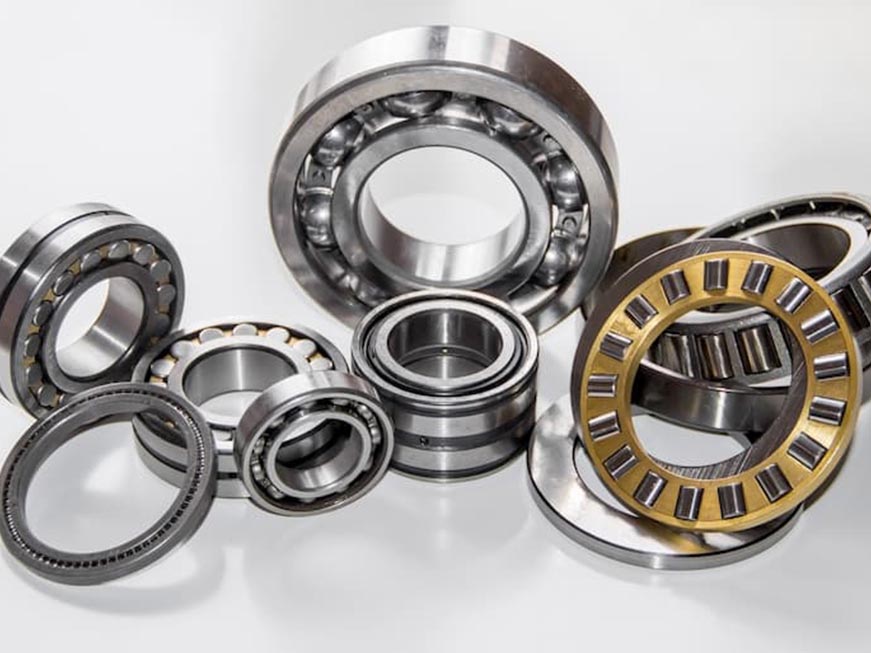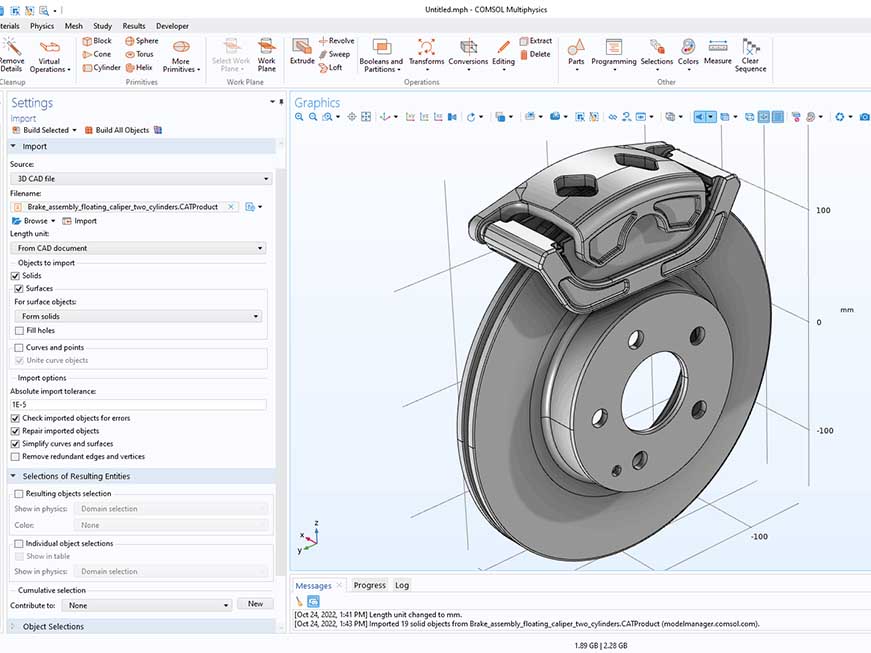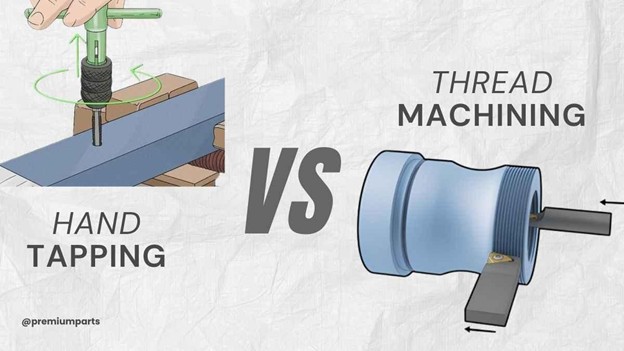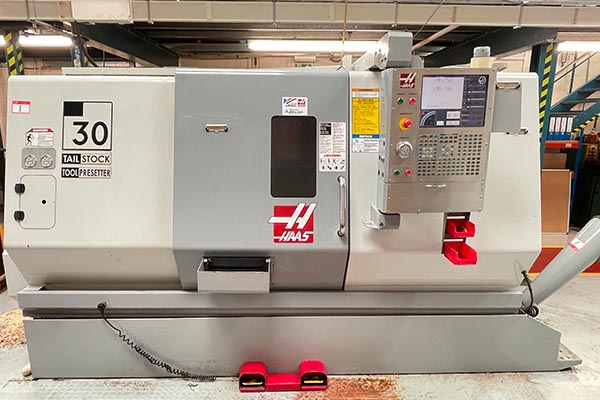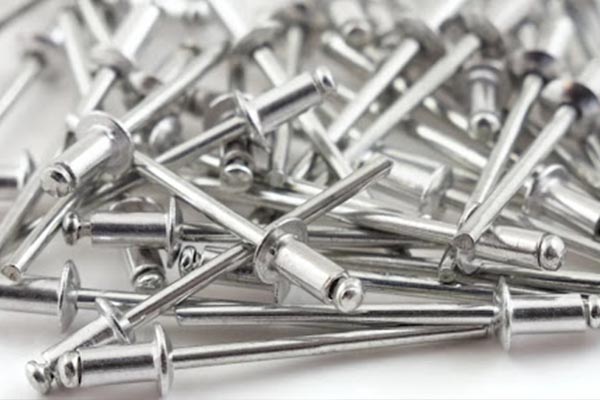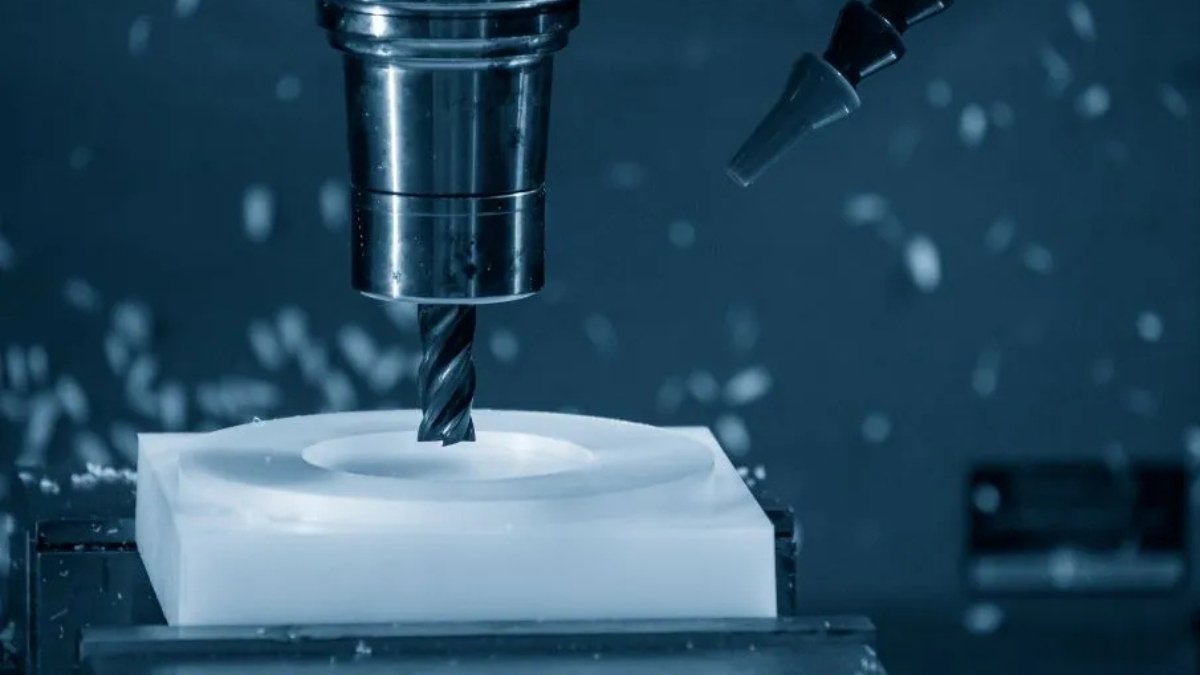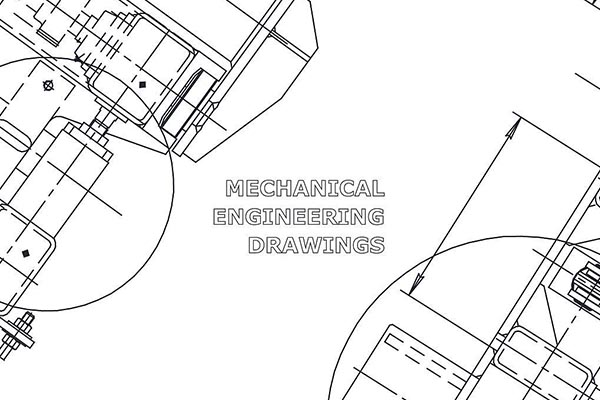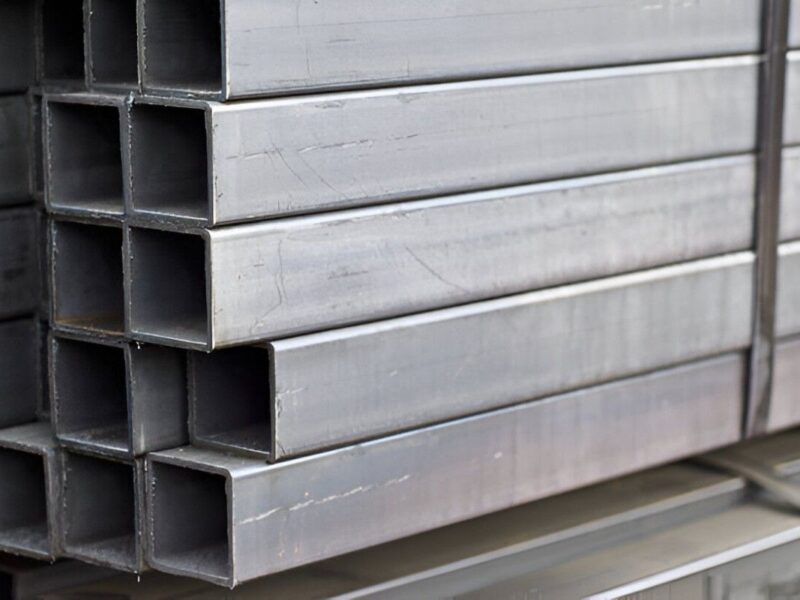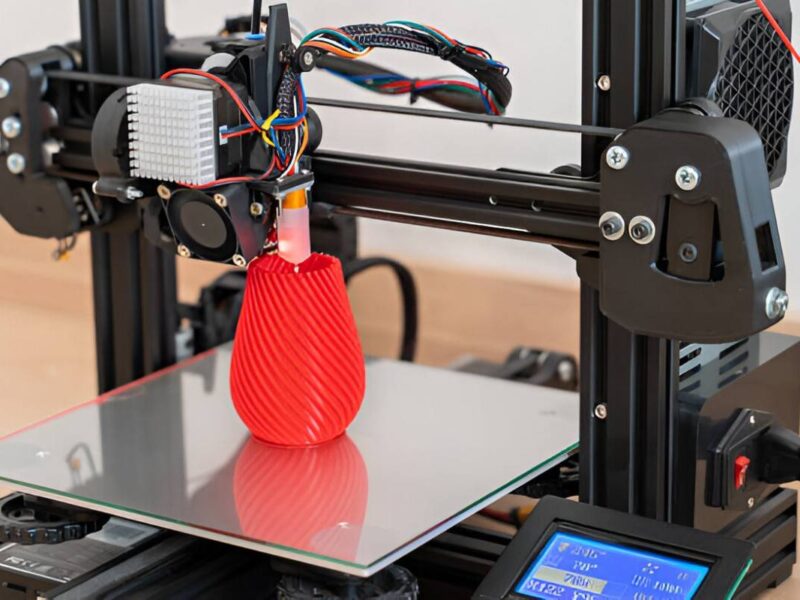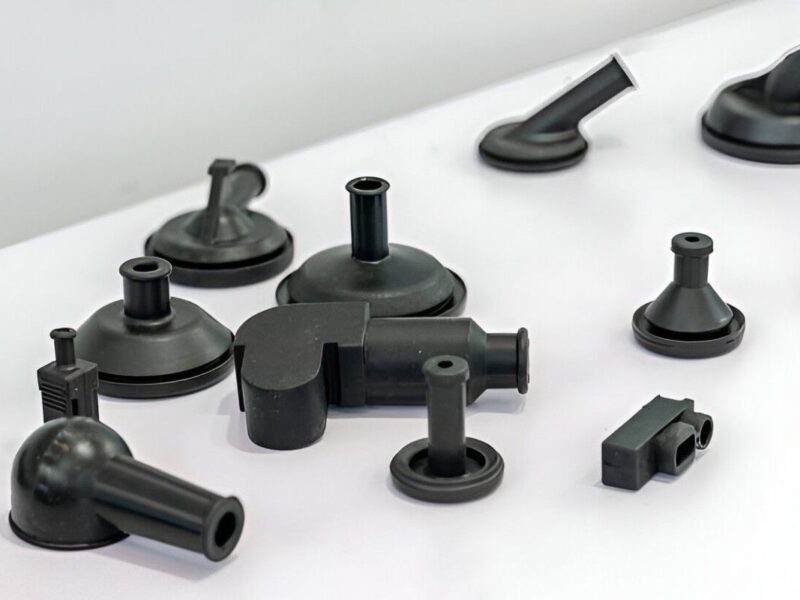The modern industry demands quality and precision. From heavy industries such as automobiles and aerospace to the health industry, each relies on precision parts. So, if you are a business owner and need quality parts for your project, what method are you going to choose? Will traditional prototyping do the job in this technological era, or do you need complex designs with the fastest turnarounds? CNC precision machining parts come with high precision and a tolerance of +/-0.001 inches.
Casual machining methods can’t achieve this accuracy and high quality. Although CNC precision seems costly, its benefits make it worth it. No matter what type of project you are working on, Premium Parts can help. Whether the parts no longer exist in the market or are new, our team can easily carry out small—to large-scale production.
What is CNC Precision Machining?
CNC stands for Computer Numerical Control, which uses computer technology to create precision parts. With the help of coding instructions, it controls the movements of the tools, which creates parts with extreme precision. Firstly, the operators create a CAD (computer-aided design) and then convert that design model into computer instructions. After that, the operator loads these instructions into the machine, and it works accordingly. Consequently, CNC precision machining offers parts according to accuracy and high tolerance.
Moreover, we can create many similar parts in bulk with consistency in design. Subsequently, CNC machining can produce parts with complex shapes and geometries as it can handle multiple axes. An automatic manufacturing process requires less workforce and the ability to make mistakes. So, the manufacturing process becomes faster and offers the requisite quality.
This method can also create CNC precision machining parts of different materials. From plastics like ABS to metals, including Aluminum and Steel, it can handle any material. CNC includes different machining methods such as milling, turning, drilling, boring, and others. Each method yields distinct results according to the customer’s requirements.
CNC Precision Machining Parts and Components
CNC precision machined parts are the parts that need intricate details and features, including holes and grooves. Besides, operators need to specify their dimensions to ensure they will fit perfectly in the main machinery. Their functionality and performance depend upon the accuracy of their design. Shortly, they can create or break your whole machining project. Thus, it’s best to use special machining methods that yield high-quality, accurate parts with fewer errors.
Furthermore, CNC machining also comprises many different tools and components that work to create a precise part. CNC machines are a combination of other software and hardware components. Each of these factors plays a major role in offering efficient and reliable results. Here are some major elements of CNC precision machining:
CNC Machine Frame and Bed
The main frame of the machine creates its structure, while the bed offers a platform to place and fix the workpiece. The bed ensures stability and minimizes errors during the machining process.
Cutting Equipment
Cutting tools such as mills, drills, and boring bars are cut into the material and moulded in a particular shape. They have a solid build to cut into the material and achieve the requisite geometry.
Holders of Cutting Tools
Cutting tools need holders to keep them in place during the machining process. Different types of holders, including side locks, hydraulic holders, and collet chucks, ensure consistency and reduce tool wear and tear.
Spindle
The spindle is of great importance as it helps the cutting tools rotate around the workpiece at different speeds to perform the cutting. Depending on the design, they can rotate on different axes, from vertical to horizontal. It ensures the precision of cuts and smooth rotation of the tools.
CNC Controller
The CNC controller is the brain of the CNC machine. It reads the programming instructions (G-code), controls the movements of the tools, and manages their paths. It also ensures micro-level precision by controlling feed rates and spindle speed. The operators use the machine’s interface for commands and monitoring.
CAM (Computer-Aided Manufacturing)
The purpose of CAM is to convert the 3D model of the part design into the coding instructions (G-code). It determines the path of the tools and how they will work on the workpiece, optimizing the manufacturing process for precision and quality.
Why Do We Need CNC Precision Machining Parts?
The CNC precision machining parts come with an accurate design that meets your requirements. Moreover, the quality and reliability of these parts enhance the performance of the machines. Furthermore, precision machining methods increase productivity by offering large-scale production. Other than that, they also offer consistency and better surface finishing. Here are the detailed benefits of CNC parts:
High Accuracy and Consistency
CNC precision machining creates parts with high precision and tolerance. Thus, they go according to the client’s requirements and enhance the functionality of any machinery. Moreover, industries like automotive, aerospace, and medical need tight precision. Thus, CNC machining ensures the design of the parts is consistent, whether it’s only one batch or multiple batches.
Cost-Efficiency
Although CNC precision machining parts seem costly, they are actually worth it. CNC machining offers parts with high precision and minimum errors, reducing wastage. For large-scale production, the cost is usually reduced for each unit. Besides, as it involves fewer human interactions, the chances of mistakes are near to none.
High-Quality Products
Welding and casting do not offer high-quality products as these methods change the specs of the materials. However, CNC machining parts retain their original quality, such as hardness, durability, and tensile strength. Besides, CNC precision machining ensures premium finishes with fewer defects. Thus, operators don’t need to apply further finishing procedures to them.
High Performance
CNC precision machining parts are usually durable and have better quality and surface finish. These features enhance their lifetime by reducing wear and tear. Moreover, CNC parts don’t need frequent replacements and are best for longer runs. Most of them can handle high pressure and temperatures. They have precise designs that enhance the performance of the areas of their use.
Complex Geometries
Expert manufacturers like Premium Parts can turn any design into reality. They can machine any part design according to your requirements without sacrificing the quality. What’s better, CNC machining can create parts according to the modern needs of industries, from electronics to body implants. Whether you need parts with simple designs or complex geometries, CNC machining has it for you.
CNC Precision Machining Parts Methods
The manufacturing of CNC machining parts includes different methods and techniques. These techniques are to achieve high accuracy and tolerance. Each process has a special outcome according to personal needs. The main methods include:
- CNC Milling: CNC milling machines include a rotating cutting tool which offers subtractive manufacturing. It removes the material from the workpiece and shapes it according to requirements. The CNC milling has various uses in aerospace, automotive, electronics, and other industries.
- CNC Drilling: CNC drilling features rotating drill bits to create holes in plain workpieces. This technique usually creates parts used for assembly purposes. Whether it’s plastic or metal, CNC drilling offers design consistency. Its major applications are in electronics, control panels, and other manufacturing industries.
- CNC Grinding: This method features a rotating grinding wheel that removes the material from the workpiece and gives it a particular shape and finish. Different methods of grinding, from surface to cylindrical, offer high precision.
- CNC Lathing and Turning: A subtractive machining process in which the workpiece rotates while the cutting tools cut into the materials. This method is best for accurately manufacturing cylindrical parts.
- CNC Plasma Cutting: A manufacturing process featuring a plasma torch that cuts the conductive materials with high precision. The hot plasma streams melt and cut the material according to the pre-programmed path. This method is good for automotive repair, fabrication, and industrial construction.
- EDM Machining: The electrical discharge machining uses an electrical discharge to remove the material and shape the part. It’s best to machine the hard materials and create complex shapes with precision.
Applications of Precision Machining Parts
Precision machining parts have diverse applications in different industries. They play a vital role in the performance and assembly of major machinery. Here are some of their common applications:
Automotive
The automobile industry is evolving with the increasing demand for precision parts. These parts are crucial for the optimum performance of the vehicles, from shafts to valves and sensors.
Aerospace
The aerospace industry relies on CNC precision machining because they need lightweight and high-quality parts with good tolerance. Moreover, their strength and reliability are also important. They have diverse uses, from engines to turbine blades and landing gears.
Medical
The medical industry often needs high-precision parts for the safety of the patients. Thus, CNC precision machining offers parts for x-ray machines to implantable hardware. Besides, the surgical instruments to screws and storage components.
Electronics
Electronics also need high-precision CNC parts. From housings to connectors and other electronic systems, every element plays a major role in the safe and secure functionality of electric devices.
Conclusion
CNC precision machining parts are the fundamentals of many industries. Their precise design and tight tolerance make them reliable and consistent. They also ensure the smooth operation and performance of different machines. Moreover, CNC machining enhances the safety and efficiency of the manufacturing process, leading to less waste.
At Premium Parts, we handle your parts manufacturing needs with utmost care and attention. We are ideal for your CNC precision machining needs, and we have years of expertise in this field. Our experts leverage modern CNC technology to offer cost-effective and reliable part manufacturing solutions. Besides, we can provide tight tolerances according to your demands. Whether you need small-scale or large-scale manufacturing, we make sure to offer prompt production. If you are going to start a new project or need high-precision parts, contact us today and get started with your parts manufacturing at an affordable quotation.
FAQs
Why are CNC precision machining parts manufacturers important?
CNC precision machining can enhance the performance and efficiency of parts. They can work along different axes to perform various tasks and create different geometries. Expertise and proper machinery are needed to make these parts, with a keen focus on product details. Investing in CNC machinery is a huge milestone, and the right labour force also costs a lot. Thus, CNC manufacturers like Premium Parts offer their services to meet your project’s requirements. They follow strict quality standards and ensure the parts have tight accuracy and tolerance.
What is the tolerance of CNC precision machining?
The tolerance of CNC precision machining determines if the product has the same dimensions as in the design. Also, it defines the range of variations in the original design requirements. However, it depends upon the accuracy of your CNC part and the machinery you are using. Besides, the reliability of the measuring instrument also makes a difference.
How can we do CNC precision machining?
It’s important to do CNC manufacturing with great care. First, we start with CAD to design the product model, and then, using CAM, we convert that 3D model into programming instructions. These programming instructions are also called G-code. After that, we load that code into the CNC machines, and they use different tools to work according to the code. They move according to the instructions and design the product.
What’s the difference between precision and accuracy in CNC Machining?
Accuracy means the product’s measurement is according to the requirement. For instance, if the measurement of a product deviates from the desired value, then it’s not accurate. However, precision means the ability of the machines to replicate parts with the same consistent features. Precision measures the degree of closeness and similarity between two parts.


